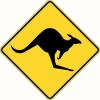Part of what makes a plane a smoother is the shorter length to follow slight irregularities on a surface.
Some argument could be made a #5-1/2 taking a full length gossamer shaving may make a flatter surface than a sorter plane adhering to a less than perfectly flat surface. Not that anyone would likely notice the difference.
If you want a wider smoother a #4-1/2 is a possible choice.
jtk
"A pessimist sees the difficulty in every opportunity; an optimist sees the opportunity in every difficulty."
- Sir Winston Churchill (1874-1965)




 Reply With Quote
Reply With Quote





